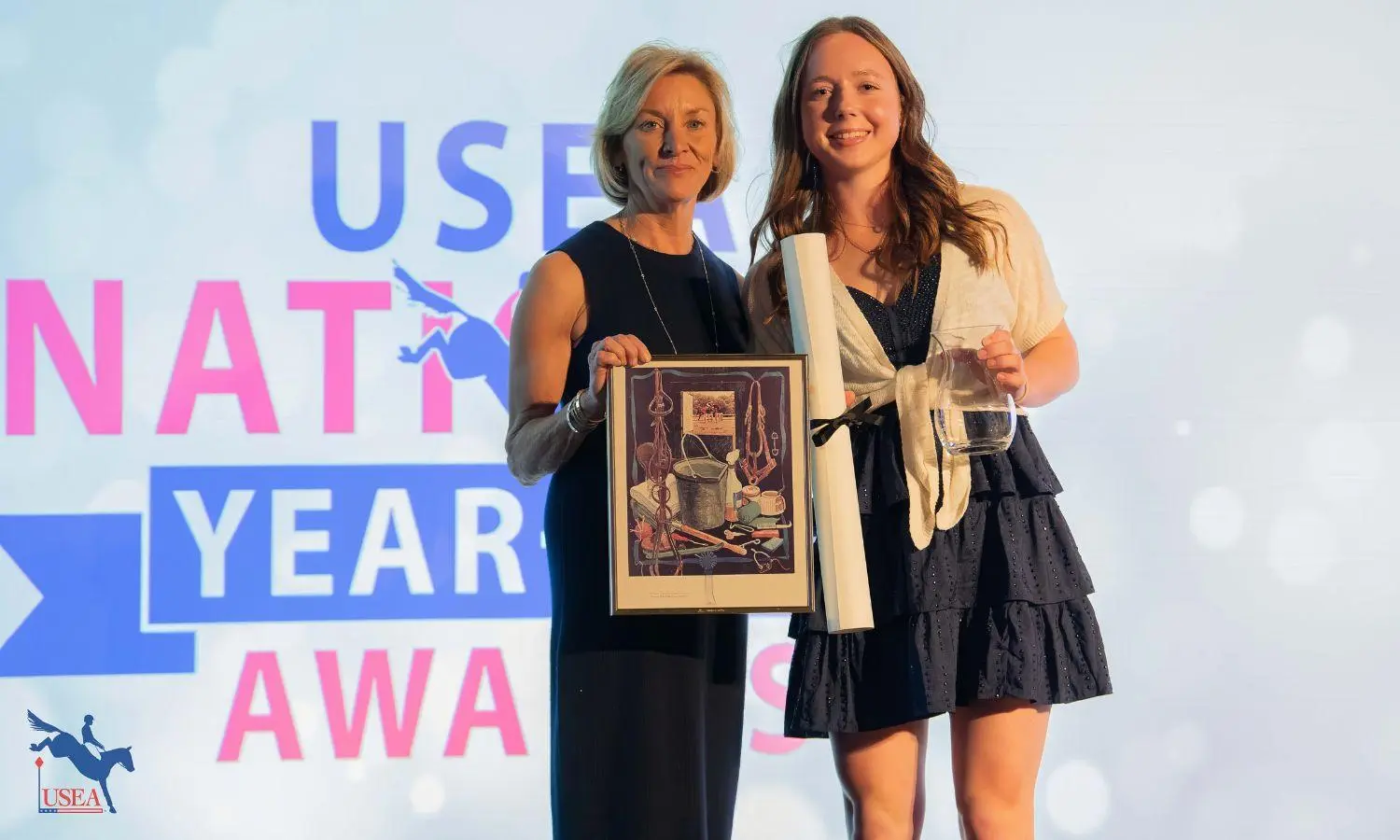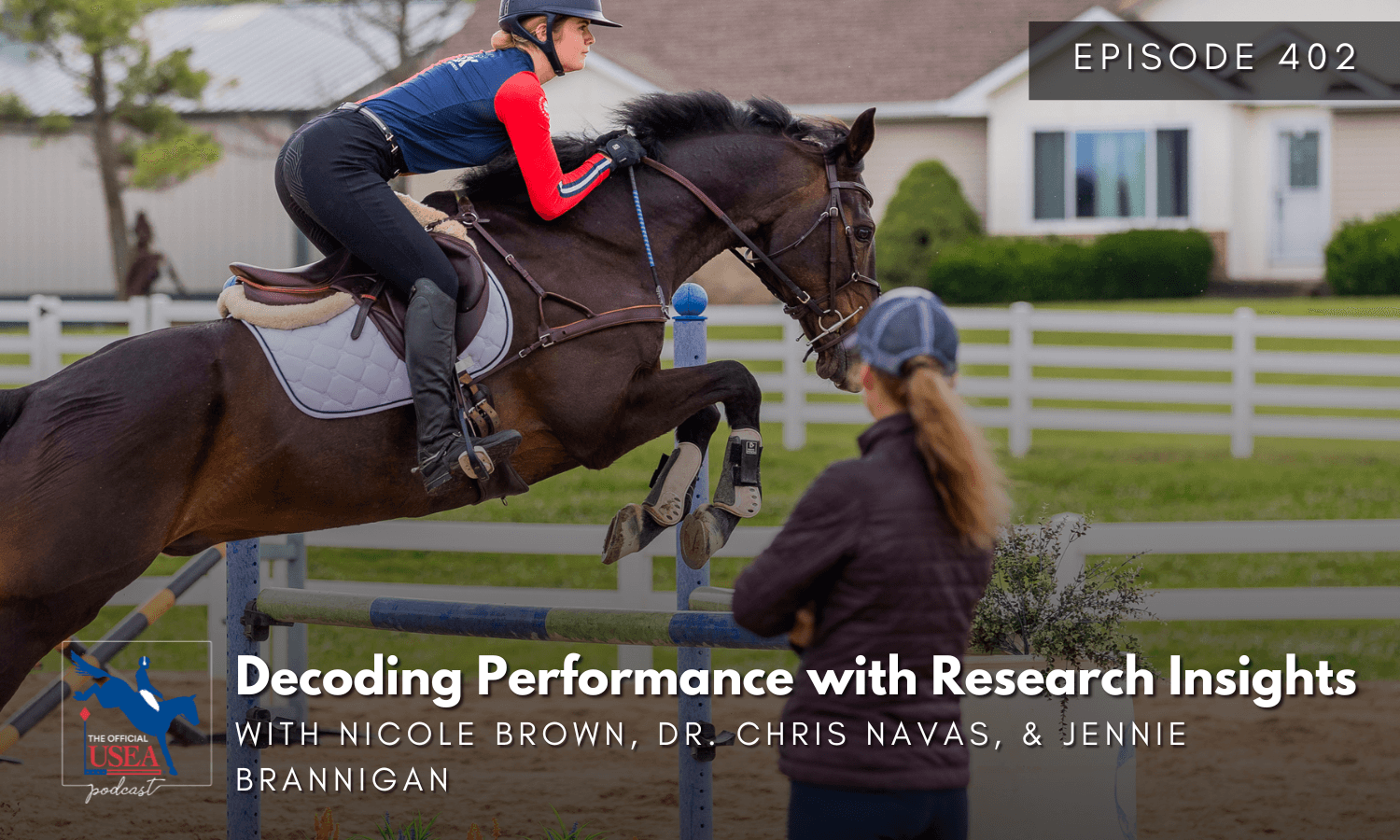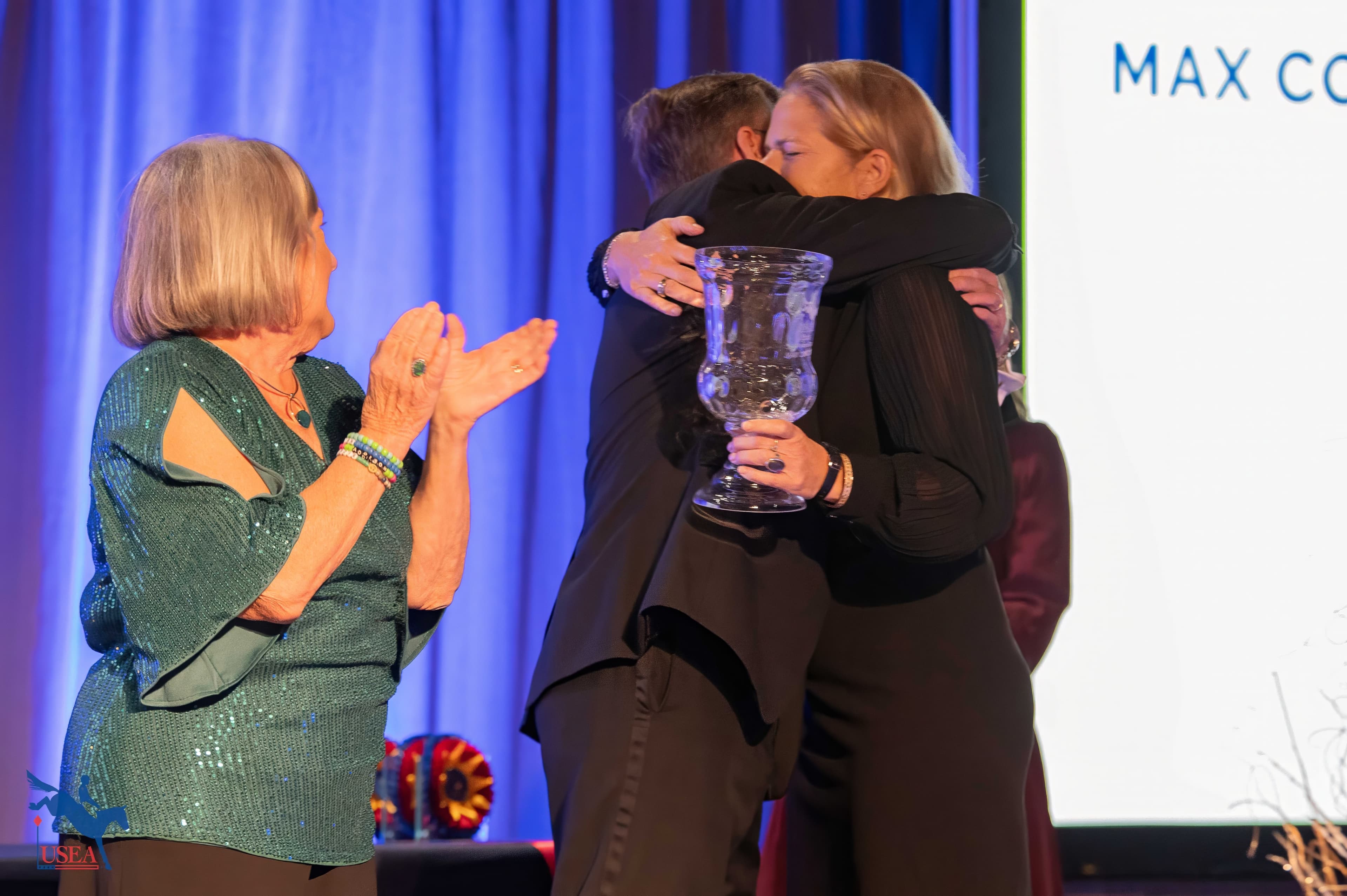Grid Pro Quo with Ashley Kehoe
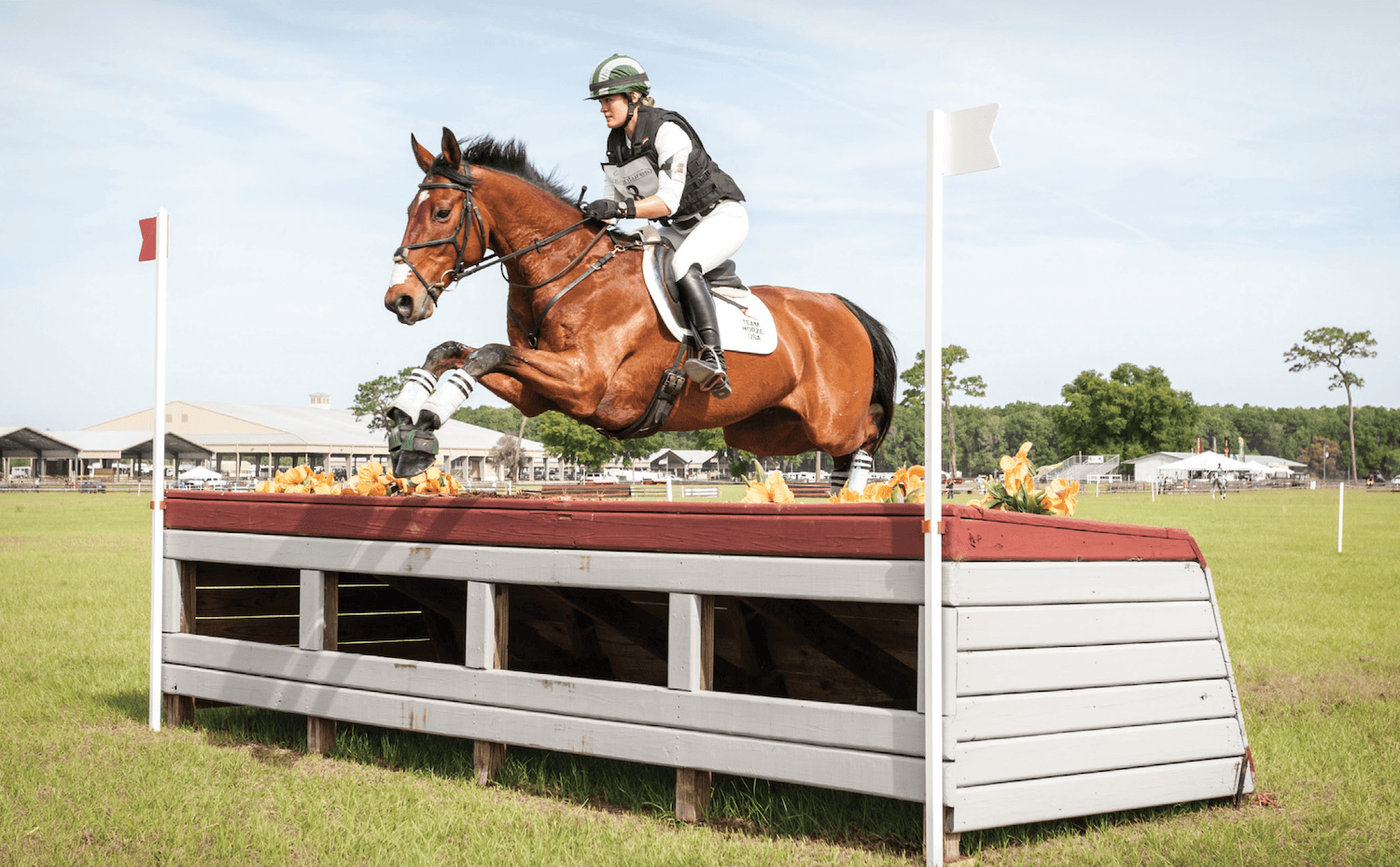
Ready to spice things up this winter training season? Do you want to use being stuck in the arena as an opportunity to fine tune your riding? In this series, we are revisiting some of our favorite Grid Pro Quo articles from Eventing USA to help you use the off-season to your advantage and keep you and your horse in tip-top shape for when it's time to get back out there. Click here to check out other past Grid Pro Quo exercises!\
WHY:
Having spent almost two years in Europe working with some of the best young horse trainers in the world, I learned some great low-impact jumping exercises that I have adapted to utilize not only for my young horses but also for my Advanced partners. This Grid Pro Quo is all about practicing doing less with our hands, and more with our seat and legs!
These three exercises are also great because they are quick to set up. You only need six standards, seven rails, and a few extra cavaletti. It’s easy to set it up on your own, and it's not necessary to get off and on throughout your jump school.
I’m sure you’ve heard from your trainer before, “less hand and more leg!” When initially training young horses, they don’t always understand the rein aids so really concentrating on teaching them how to adjust off your seat and legs now will only make them into a more rideable and educated older horse. In turn, all of this work really helps your horse strengthen their ability for self-carriage which encourages them to stay round and connected throughout the exercise.
HOW:
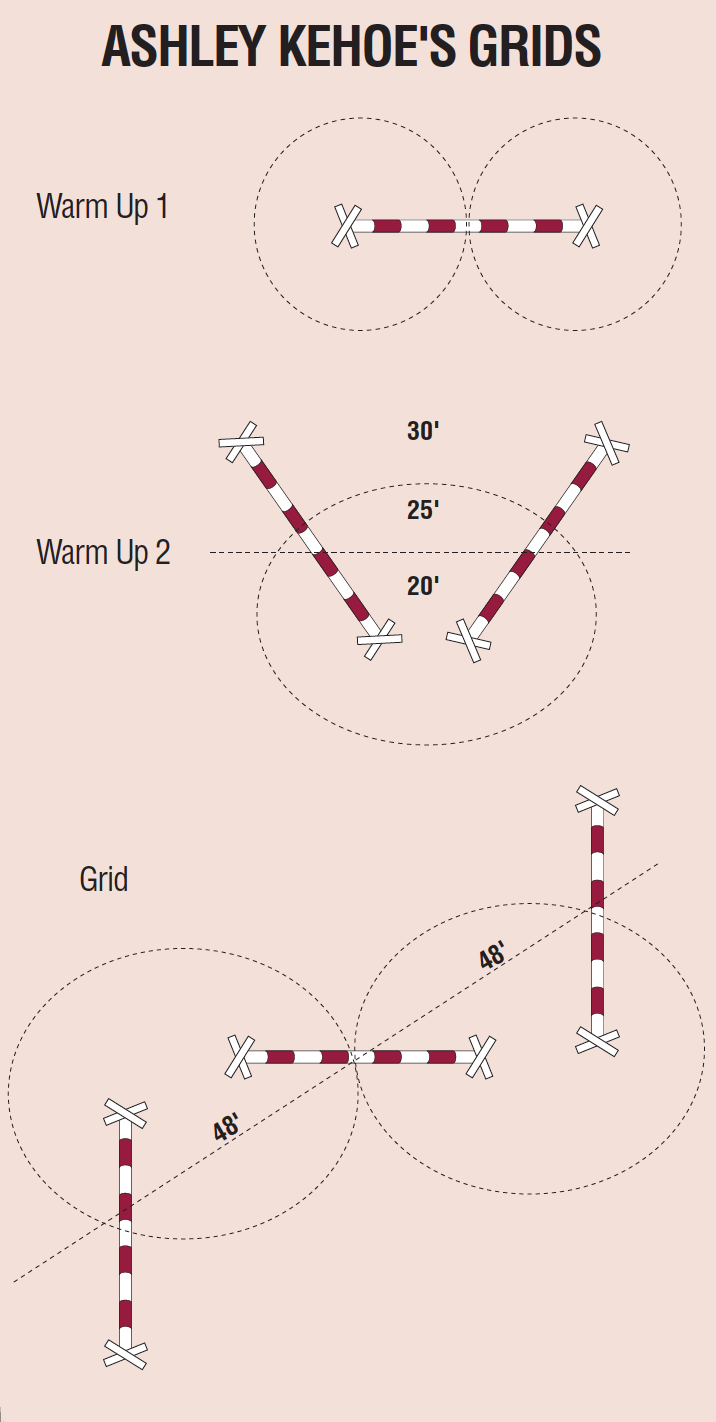
I always start my warm-up by making sure that all of my horse’s buttons are working. I want to make sure my horse is able to go forward and come back, all while staying round and connected. Once I can accomplish this at all three gaits, I will canter over the single rail on the ground once in both directions. Think about looking through your turn to find your distance and use half-halts from the seat and leg to get the perfect spot, not just the hand. This may take a 4-year-old all day, but it may take an Advanced horse one circle in each direction until they are ready to move on to the next phase.
The second phase of the warm-up helps you create adjustability. Horses are more willing to stay round and collected on a circle versus a straight line, so I like to take advantage of that by using these two cavaletti on a circle to introduce this concept to my younger horses. To be successful in this exercise you must plan your trajectory and concentrate on using your seat and legs to balance your horse. For young horses, do this exercise with single poles, then graduate to the cavaletti.
For the older horses it’s a great reminder to stay round, even while “jumping.” The fences are small enough that you can spend a bit of time on this portion of the jump school without straining your horse’s legs. The distances between these two cavaletti really challenge you to learn how to place your horse and allow them to compress or open their stride fractionally. There’s enough room between the rails that you’re able to land over the first rail and collect to fit in two strides before the next rail. If your horse is getting strong and trying to take over, there is enough room to halt between the two rails.
As a rider working through these warm-up exercises, I always check in and make sure that my horse is balancing himself on his own and not balancing on my hand. More importantly, I make sure that I’m not balancing myself on my reins. Also, if at any point I feel as though the exercise is becoming too stressful for my horse, I will simply go back to Exercise 1 for a little bit, before coming back to Exercise 2. If I only get to Exercise 1 and 2 for the first jump school, that is just fine! I can always leave the exercise set up in the arena and come back to it another day.
Once you’re ready to start tackling Exercise 3, you have several options depending on where you and your horse are in your training. If you’re on a less experienced horse, you may start by simply cantering circles over the middle jump and one of the end jumps. This is a great place to practice looking through your turns just as we did in Exercise 1 of this jump school. Once you perfect your circle in one direction, you can simply change direction over the middle jump and begin a circle in the other direction. From there you can challenge yourself to do an S-turn through the three jumps.
Regardless of which piece of this exercise you start with or your level of riding, you want to keep the jumps small to start off. This way you and your horse are more comfortable making mistakes and being adjustable. Once you are comfortable with the exercise, you can raise the jumps to your competition height to challenge yourself. Just always remember that these exercises are not about the jumps, they are about the communication between you and your horse!
If you and your horse have breezed through these exercises and you’re looking for a challenge, the next step is to start playing with the striding between the jumps. When starting the S-turn portion of the exercise, I am not too picky about whether my horse is putting in four or five strides between the jumps but I do want the horse to remain consistent in their stride. If my horse is consistently putting in four strides, I will now want to challenge myself and try for five strides between each. And then I will attempt to go back to the four strides. I will even challenge myself further by going for four strides in the first bending line, and then five in the second. The name of the game here is adjustability!
If you have a horse that is ready to start angling fences, I would try the straight line which is three open strides. And then I will go back to the bending lines because all of this practice in adjustability transfers to your course riding. I often find that riders are not as adjustable on course at a horse show, whether it is because of nerves or something else. Importantly, practicing this “extreme adjustability” necessary for these three exercises will simply give you more tools for your toolbox once you’re in a competition atmosphere.
About Ashley Kehoe
Ashley Kehoe is an Advanced-level event rider from Purcellville, Virginia. Not long after earning her “A” rating with the Radnor Hunt Pony Club, Kehoe began training with Olympians David and Karen O’Connor reaching the CCI3* (now CCI4*) level with her then partner, Mazetto. Since then Kehoe has ridden for top riders such as Sharon White, Debbie Adams, and Michael Pollard in addition to spending time throughout Europe competing and advancing her education. In her limited spare time, Kehoe works to continue to grow the company she started during college, Rebound Hoof Pack, which sells soreness relieving hoof pack for horses of all disciplines. Kehoe currently juggles galloping racehorses, competing her upper-level mounts Kiltealy Toss Up and Cinco de Mayo in eventing, and her mare D.A. Vittoria in the 1.40m jumpers. Kehoe has her sights set on the Rolex Kentucky Three-Day Event in the future and is determined to continue to work hard to achieve her goals. To learn more about Kehoe visit: ashleykehoe.com
This Grid Pro Quo first appeared in the May/June 2017 issue of Eventing USA. Want to read other great articles like this? Become a USEA member today and get a subscription to Eventing USA.

